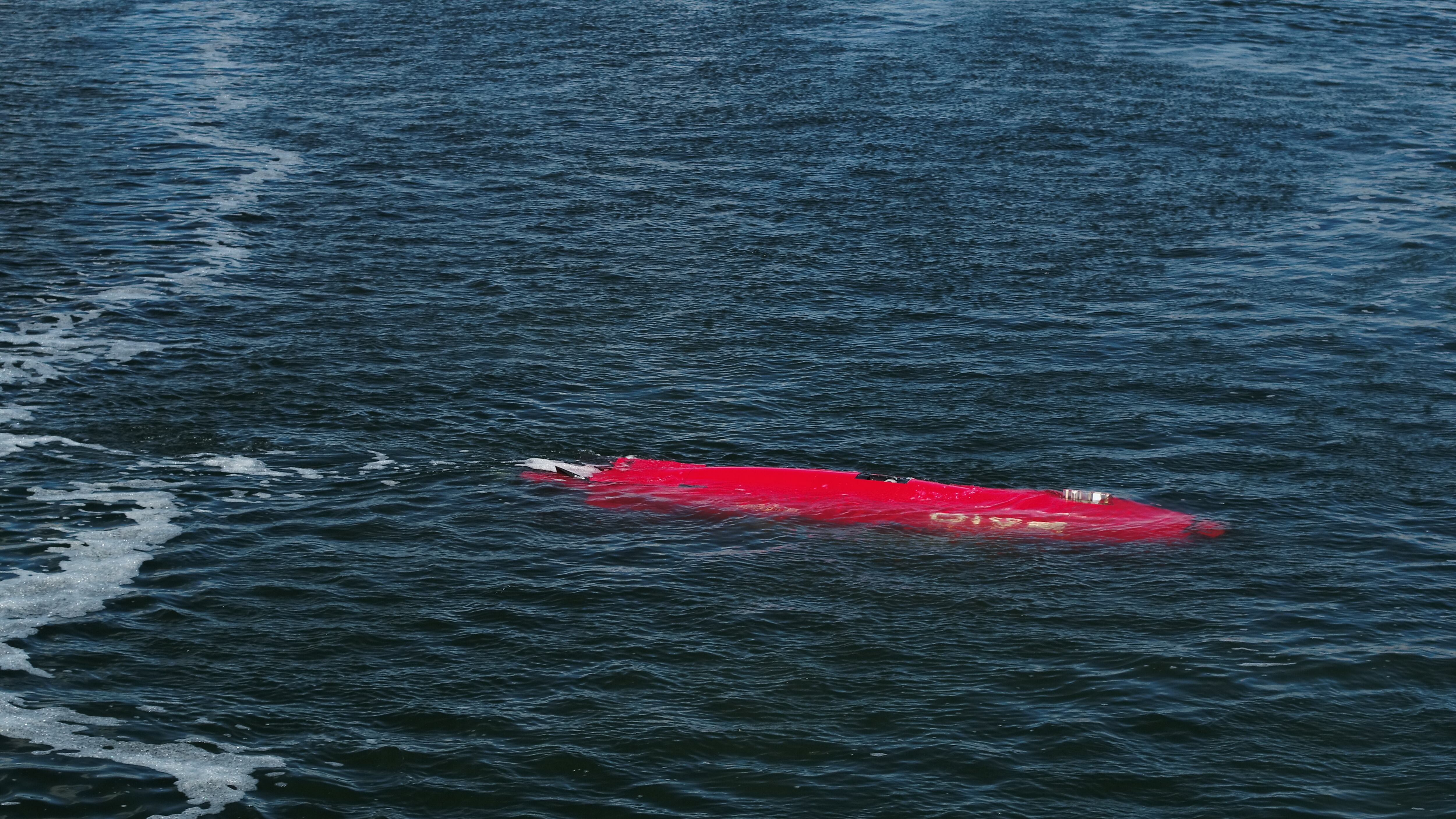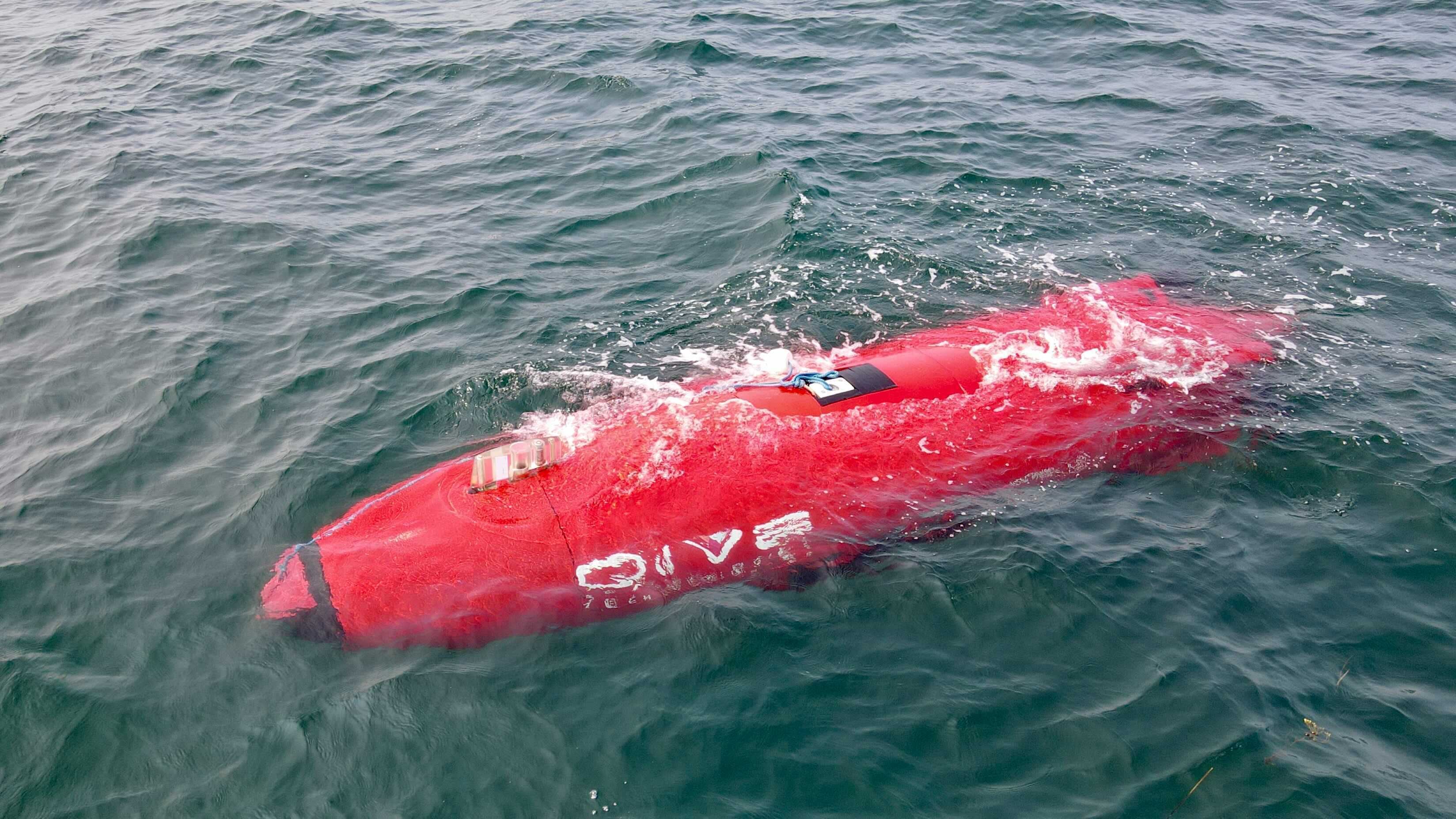WASHINGTON — Defense technology company Anduril Industries has acquired autonomous underwater vehicle-maker Dive Technologies in a bid to grow its portfolio of artificial intelligence-powered products.
Dive Technologies, based in Boston, builds the DIVE-LD large displacement unmanned underwater vehicle, or LD UUV. The system has already been matured and could conduct defense and commercial missions such as long-range oceanographic sensing, undersea battlespace awareness, mine countermeasures, anti-submarine warfare, seabed mapping and infrastructure health monitoring.
Anduril’s chief strategy officer, Christian Brose, told Defense News that the two companies had been in talks for some time about how to pair Dive’s lower-cost UUV — which is built using commercial off-the-shelf internal parts and a 3D-printed hull — with Anduril’s expertise in machine learning and intelligent networking.
Ultimately, the two companies decided the best path forward was for Anduril to acquire Dive Technologies and turn it into the maritime division of the larger firm.
“We very much feel like we’re already on the same team in the sense that they just want to move very quickly; they want to build disruptive capabilities; they want to get them out onto the water, under the water, into the hands of operators; and solve problems fast — which is the very same kind of disruptive approach that we bring,” Brose said of the 30-person Dive Technologies team.
“They also bring just an enormous wealth of expertise and experience in the undersea domain, which is just very different than every other domain that the military operates in. Everything is different and unique there in terms of communications, or lack thereof; navigation; much higher levels of autonomy required to be successful down there; to say nothing of just the unique challenges of being under the water.”
Brose repeatedly described Dive Technologies’ work and potential collaboration with Anduril as “disruptive.” He said the open-architecture DIVE LD comes in at about a tenth of the cost of competing LDUUVs and was built for rapid integration of new technologies — with new payloads to be integrated and tested on the DIVE LD in a matter of weeks.
“The thesis of [Anduril when it was founded] was that rather than sort of trying to build better versions of traditional things … these technologies allow you to change the approach to your problem radically, where autonomy allows you to reduce cost and manpower such that you can now envision approaches to problems that look like larger, and larger numbers of very autonomous, very intelligent, much lower-cost, more attritable systems working together to actually automate and accomplish missions,” he said.
On the military side, he said the U.S. Navy’s Snakehead LDUUV program is being built for a good mission set, but “I think we would contend that there’s actually a lot of things that a large autonomous underwater vehicle could do beyond the things that the current program of record has been specifically focused on accomplishing. Particularly when you start adding in higher levels of autonomy, embedded sensor processing, rapid customization, and just the cost reduction, the ease of launch and recovery, all things that the Dive system makes possible — it really starts to open up other missions,” Brose said.

The DIVE LD, at 20 feet long and 4 feet in diameter, can travel hundreds of kilometers and “carry a pretty significant amount of payload,” Brose said. That, plus the low cost, coupled with Anduril’s “AI-enabled systems and processes,” create something the company thinks it can sell to a range of customers.
Brose was also excited to bring Dive Technologies’ maritime expertise to Anduril’s original counter-drone system for base defense and force protection. Coupled with the current system — the Lattice operating system, Sentry tower and a small Anvil drone as the interceptor — Brose said a UUV could provide additional sensing for the defense of coastal bases and facilities.
Anduril was founded in 2017. In April 2021, it acquired drone-maker Area-I, giving it a low-cost, tube-launched drone to pair with its advanced autonomy developments.
In January, U.S. Special Operations Command selected Anduril to lead its counter-drone systems integration work in a $1 billion deal, Defense News reported.
Megan Eckstein is the naval warfare reporter at Defense News. She has covered military news since 2009, with a focus on U.S. Navy and Marine Corps operations, acquisition programs and budgets. She has reported from four geographic fleets and is happiest when she’s filing stories from a ship. Megan is a University of Maryland alumna.








